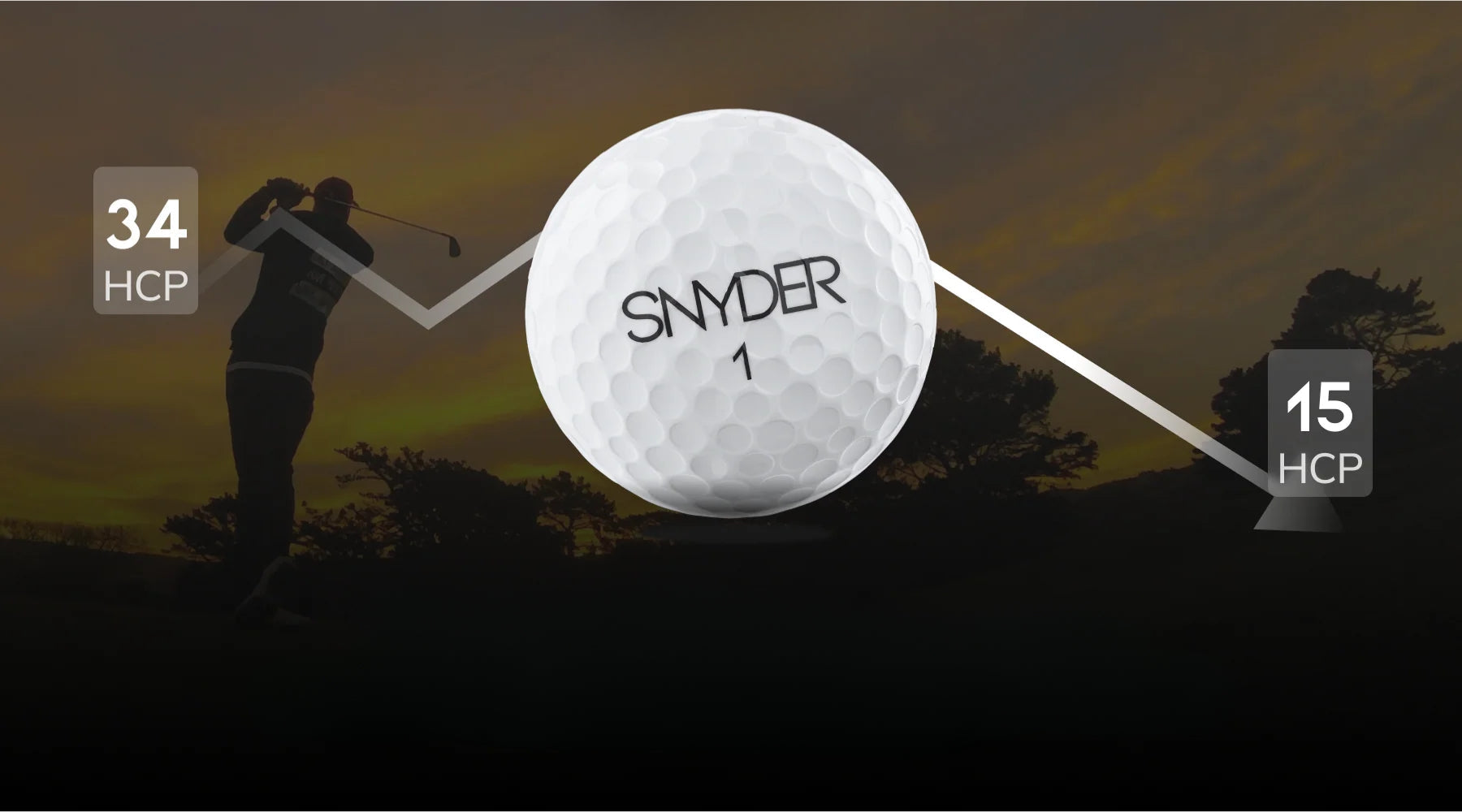If you're just getting into the game, it's natural to wonder: how long does it take to get good at golf? The truth is, there's no one-size-fits-all answer, but with the right mindset, practice habits, and gear, most beginners can see real improvement in just a few months.
Whether you're aiming to break 100, lower your handicap, or simply feel more confident on the course, this guide will walk you through how long to get good at golf based on realistic milestones and personal factors. From practice tips to equipment advice, you’ll find everything you need to understand what it really takes to become a better golfer, and how to enjoy the journey along the way.
Golf Learning Timeline: From Beginner to Competent Player

So, how long does it really take to get good at golf? While every golfer's journey is different, here’s a realistic timeline to help you understand the phases of improvement, especially if you're starting from scratch. This timeline assumes a typical recreational golfer who plays and practices a few times a week.
0-6 Months: Learning the Basics
Your first six months are all about building a foundation. Expect to spend most of your time learning the fundamentals, how to grip the club, set your stance, and develop a basic swing. This is also when you’ll start understanding golf rules, etiquette, and how to navigate a course. Mistakes are part of the process, and consistency may be elusive, but these early months set the tone for everything that follows.
Key milestones:
- Making solid contact with the ball
- Completing your first full 18-hole round
- Understanding different clubs and when to use them
6 Months-1 Year: Building Consistency
After about six months, you’ll start to see improvement in your ball striking. You’ll hit more fairways and start making smarter decisions around the course. This is when many golfers begin focusing on course management, learning when to take risks and when to play it safe. If you've been tracking your stats or working with a coach, you’ll likely see your handicap start to drop.
Key milestones:
- Breaking 100 consistently
- Hitting more greens in regulation
- Reducing three-putts
1-2 Years: Sharpening Your Short Game
Once you’ve got a solid full swing, your focus will likely shift to scoring, and that means improving your short game. Chipping, pitching, bunker play, and putting start to play a bigger role in your practice routine. This phase is often when golfers experience the most rapid drop in handicap, especially if they prioritize short game over driving distance.
Key milestones:
- Breaking 90
- More up-and-down saves from around the green
- Lower average putts per round
2+ Years: Playing with Confidence
If you’ve stayed committed for a couple of years, you’ve likely developed strong fundamentals and mental resilience. Now you’re working on advanced techniques, like shaping shots, handling pressure, and playing competitively. Some golfers may begin to chase single-digit handicaps or enter amateur tournaments.
Key milestones:
- Breaking 80
- Establishing a reliable pre-shot routine
- Entering local competitions or club championships
These timelines are averages. Some players improve faster with consistent coaching and structured practice, while others progress more slowly based on time commitment and playing frequency. The key is to focus on steady, measurable improvement, not perfection.
Read more: How to Become a Professional Golfer: The Path to the PGA Tour
Factors That Influence How Fast You Get Good at Golf

1. Practice Frequency and Quality
One of the biggest factors is how often and how purposefully you practice. Hitting balls for hours without structure may feel productive, but intentional practice focused on specific weaknesses produces better results. Breaking sessions into categories, like short game, full swing, and course management, helps you develop a well-rounded game faster.
Tip: Practicing 3-4 times a week with clear goals typically yields noticeable improvement within a few months.
2. Natural Talent and Instincts
Some golfers seem to "just get it" faster than others. Whether it’s hand-eye coordination, tempo, or natural rhythm, a bit of raw talent can shorten the learning curve. While talent helps, it’s not everything, consistent effort and smart practice often outperform pure natural ability over the long run.
Tip: If you feel like golf doesn’t come naturally at first, don’t worry. Most improvement comes from consistent effort, not raw talent. Track your progress, focus on fundamentals, and give yourself time to grow, your skills will catch up.
3. Access to Professional Instruction
Working with a certified golf instructor can dramatically shorten your learning curve. A coach helps correct swing flaws early, keeps your fundamentals solid, and gives you drills tailored to your game. While self-teaching through videos and articles is possible, it often leads to plateaus and bad habits that take time to fix.
Tip: Even a few lessons early on can save you months of frustration and give your game a better foundation.
4. Athletic Background and Physical Fitness
If you’ve played other sports, especially ones that require coordination, balance, or rotational movement, you may find it easier to pick up golf. Flexibility, core strength, and mobility all contribute to a smoother swing and better control.
Tip: Golf-specific fitness routines can help build the physical skills needed to maintain balance, generate power, and avoid injury.
5. Age and Starting Point
While it’s never too late to learn golf, younger players often improve faster due to quicker muscle memory development and more available time for practice. That said, many adult beginners become skilled golfers by setting realistic goals and practicing consistently.
Tip: Focus on progress, not age. Golf is one of the few sports where you can improve well into your 60s or 70s.
6. Mindset and Patience
Golf demands mental toughness and patience. Progress isn’t always linear, some days you’ll feel like you’ve taken a step backward. The willingness to learn from mistakes, stay calm under pressure, and play with a growth mindset is what separates those who improve quickly from those who plateau.
Tip: Build routines that boost mental consistency, like journaling after rounds, setting weekly goals, and celebrating small wins.
7. Time Availability
Finally, the amount of time you can consistently commit each week plays a huge role. Golf improvement requires reps, reflection, and real-world application. Players who can dedicate even 4–6 hours a week to playing and practicing typically see significant progress over a few months.
Tip: If time is limited, focus on high-impact areas like putting and chipping, which influence scoring more than driving distance.
Overcoming Plateaus and Staying Motivated

Every golfer hits a plateau at some point. Improvement slows down, and frustration builds. The key is to recognize what’s happening and shift your approach, not give up.
1. Identifying Weaknesses
Use performance data to figure out where you're losing strokes. Are you missing fairways? Struggling with up-and-downs? Three-putting too often? Tools like Arccos or Shot Scope make it easy to review your stats and highlight where to focus.
Tip: Don’t just guess, let the data guide your practice sessions.
2. Seeking Feedback
Sometimes you need an outside perspective. Checking in with a coach or even a more experienced golf buddy can reveal flaws or habits you didn’t notice. A fresh set of eyes can unlock big improvements in a short amount of time.
Tip: Film your swing periodically or schedule a lesson every few months to stay on track.
3. Celebrating Milestones
Progress in golf is rarely instant, but it is measurable. Whether it’s breaking 100 for the first time, playing a full round without losing a ball, or shaving strokes off your putting average, celebrate the wins. Acknowledging your milestones keeps you engaged and motivated for what’s next.
Tip: Keep a journal of small wins and goals, it helps reinforce your progress and keeps you motivated through slumps.
Importance of Proper Equipment

Your gear plays a bigger role in your progress than many golfers realize. Using equipment that’s matched to your skill level and swing can dramatically improve consistency, confidence, and overall performance.
Club Fitting
Off-the-rack clubs may not suit your height, strength, or swing speed. A proper club fitting, done by a certified fitter or local pro, can adjust line angles, shaft flex, and grip size to better match your swing. This leads to cleaner ball strikes, more distance, and tighter shot dispersion.
Tip: If you’re serious about improving, getting your irons and driver professionally fitted is one of the smartest early investments you can make.
Ball Selection
Not all golf balls are created equal. High and mid-handicappers typically benefit from low-compression balls that offer more forgiveness, better distance, and softer feel around the greens. Using the right ball for your swing speed can help reduce spin, promote straighter shots, and improve overall scoring.
Tip: Check out SNYDER’s guide to the best golf balls to find a ball that matches your game and goals.
Gear Maintenance
Dirty grooves, worn grips, or damaged shafts can quietly sabotage your performance. Keeping your equipment clean, regripping regularly, and checking club faces for wear ensures your tools are always helping, not hurting, your progress.
Tip: Wipe down clubs after every round and regrip once or twice a season to maintain control and feel.
How Long Does It Really Take to Get Good at Golf?
Getting good at golf takes time, consistency, and the right approach. For most players, noticeable progress can happen within a few months, but reaching true consistency, confidence, and lower scores often takes a year or more of focused effort.
How long to get good at golf depends on several key factors: how often you practice, the quality of your instruction, your mindset, and even the gear you use. The good news? You don’t need to be a natural or a full-time athlete to get better, you just need a plan, patience, and the right tools.
If you're serious about learning how to get good at golf faster, make sure your equipment supports your goals. Explore SNYDER’s blog and Golf ball recommendations to help new and improving golfers reach their potential with every swing.





Share:
How to Lower Your Golf Handicap: 15 Proven Tips for Better Scores
How to Measure Golf Swing Speed: A Complete Guide to Swing Faster, Smarter